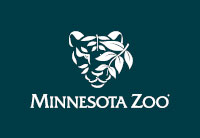The main threat to golden lion tamarins (GLT) is loss of habitat. Only 2% of the original forest remains. The largest protected area is the Poço das Antas Biological Reserve. In the surrounding area, there are farming settlements involving 180 poor families. Each of these families is trying to earn its livelihood on a small plot which cannot sustain traditional agriculture. Approximately 50% of these families are using fire to clear annual crops and pesticides, both of which pose a serious threat to the Reserve’s tamarin habitat. If their crops fail, these families may resort to hunting or other destructive activities in the Reserve.
To address this problem, this project has begun an environmental education and extension program to encourage families to farm in ways that will provide income but will not exert pressure on the remaining forest. Agroforestry systems associating agricultural species with species native to the Atlantic Forest are a viable alternative. These systems can maintain good production levels without fire or pesticides and increase GLT habitat by creating forest corridors to connect forest fragments in the settlements with the forest in the neighboring Reserve.
15 families have established agroforestry systems on their land so far. These systems have produced a variety of benefits for the families: foods such as bananas, pineapple, corn, beans, manioc, and papaya to enrich family incomes and enrich the soil through use of various species of beans. Since becoming involved in the project none of the 15 families has used pesticides or fire. This shows that environmental education can lead to long-term stewardship of the forest.
The Minnesota Zoo’s U. S. Seal Conservation Fund awarded this project $2500 in 2004 to provide supplies and support to six more families beginning agroforestry systems on their land. Staff champions for this project are Maria Reedstrom and Fred Swengel, Tropics Zookeepers.



Get Social